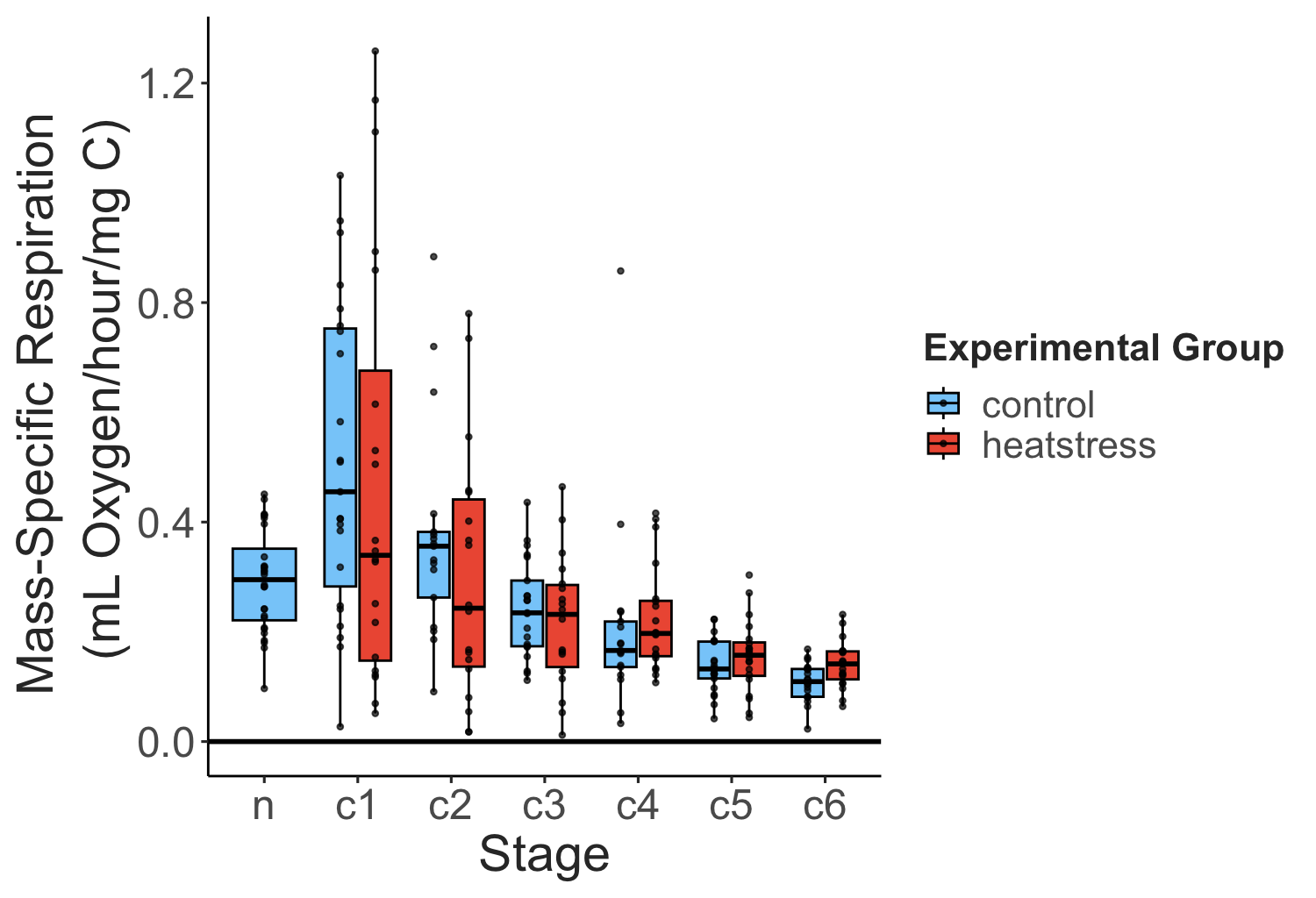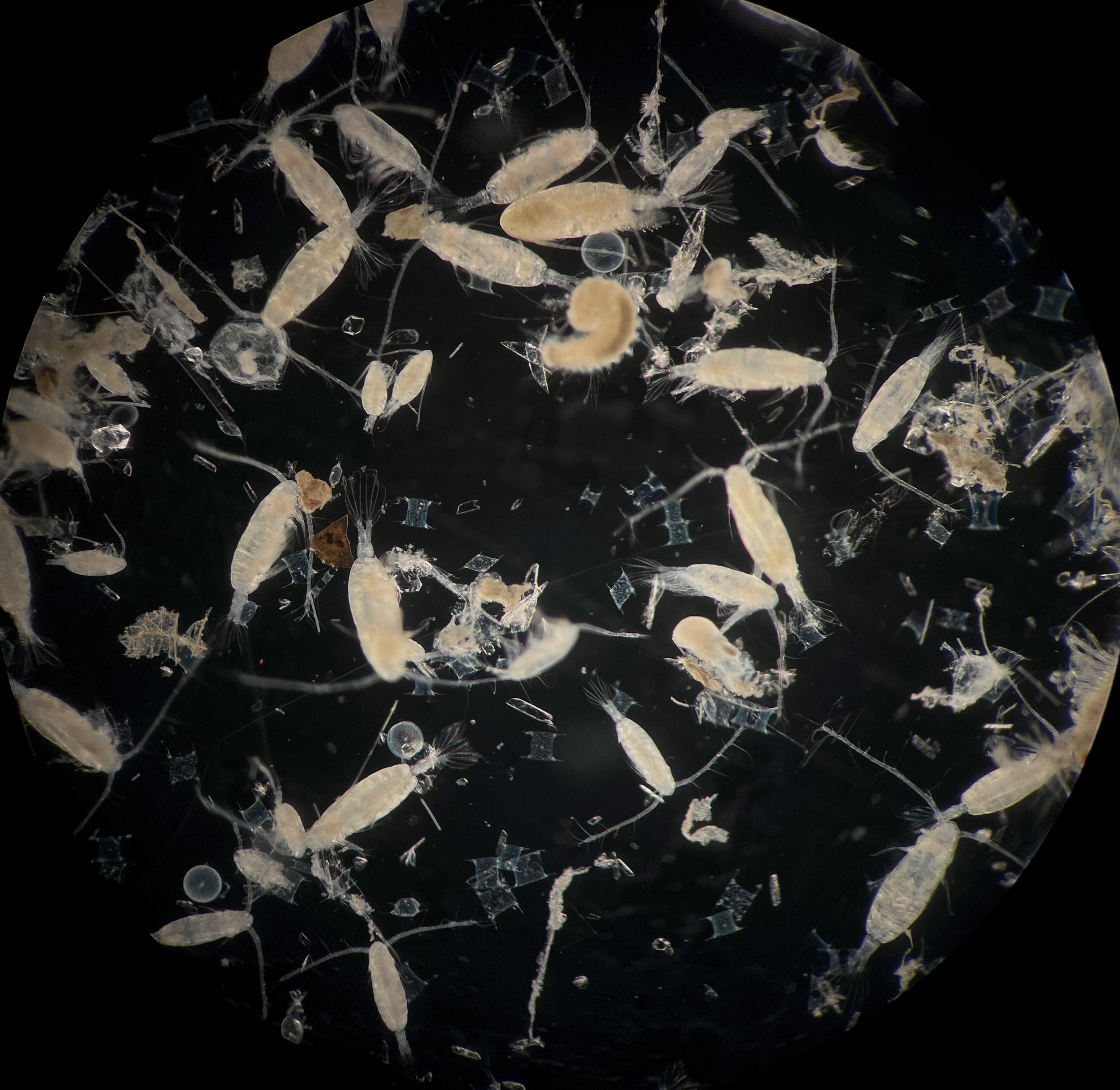Physiological Ecology
Lethal thermal limits provide the boundaries for organismal performance. There’s a whole world of biological interactions and processes at sub-lethal temperatures, however, that will also affect how populations respond to a changing climate.
Respiration & Metabolism
Respiration rates are often used as proxies for metabolism, and provide useful insights into organismal performance. There’s a long history of copepod respirometry, which highlights broad patterns in the size- and temperature-dependence of oxygen consumption in this group. We examined patterns in respiration over finer scales, tracking how respiration rates vary across development, and how these patterns might be affected by temperature stress during the early stages.

Despite their small size, we were able to measure the oxygen consumption of individual copepods, tracking their respiration rates as they passed through different life stages. As expected, the mass-specific respiration rate decreases as the individual gets larger. Interestingly, however, these patterns don’t seem to be affected by short term heat stress early in life, suggesting some degree of resilience to environmental variability.
Changes in Body Size
Body size is often related to important performance traits (respiration, reproductive output, feeding rates, etc.). Typically, we see smaller body sizes at higher temperatures. Because of their short generation times, this pattern can emerge even over seasonal timescales in temperate locations. In many cases, these locations are also subject to long-term warming, which might result in the gradual shrinkage of copepods over time. This would have important consequences for both food webs and biogeochemical cycles in these systems. Using a >20 year timeseries of monthly collections coordinated by CT DEEP we have been able to compare the seasonal and long-term patterns in copepod body size. Initial results suggest important differences between the cold- and warm-water dominant species.


Effects of Heatwaves
Another important dimension of organismal performance is reproductive success (the number and viability of offspring produced). As with respiration and body size, reproduction is strongly affected by temperature. This relationship tends to take on the shape of a classic thermal performance curve. Characterizing these curves can provide important insights about how organisms cope with variation in the thermal environment. In one past example, we characterized thermal performance curves for two different species of Acartia copepods, collected at multiple points throughout the annual temperature cycle. The curves show clearly that optimum temperatures, along with the maximum reproductive output, vary both between and within the two species. By linking physiological performance to population dynamics and ecological interactions, we can better predict the effects of heatwaves and other stochastic events.
